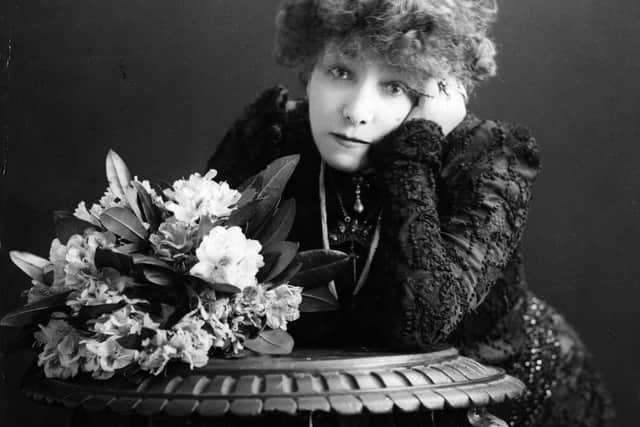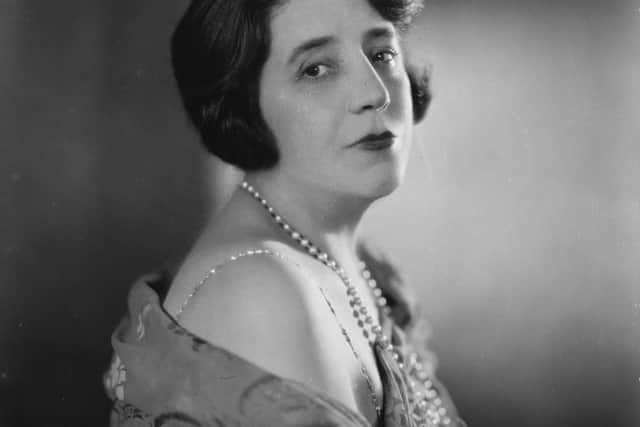The age of flying matinees and symbolic plays at Blackpool theatres
and live on Freeview channel 276
Put your hands on your hips - and let’s do the Time Warp again!
Last week’s piece saw us loitering in the Grand Theatre in the early months of its existence, looking for familiar names. There weren’t many. It was more than 120 years ago.
Advertisement
Hide AdAdvertisement
Hide AdEven as we move into the 20th century there are few familiar names - The Merry Widow is the best known - but a fascinating feature of the era gives us a story.


It was the age of the Flying Matinee! No flying was involved but the trains were fast and reliable.
The Flying Matinee happened when a show “flew in” by train from another town for just one matinee performance and then “flew off” back to where at was appearing for the week.
In Blackpool’s case the other town could be Manchester or Liverpool.
Advertisement
Hide AdAdvertisement
Hide AdIt enabled a theatre like the Grand, which had a Monday to Saturday show in residence, to squeeze a different show into its schedule, usually on a Wednesday afternoon and only during the summer season, when a full house was achievable.


Our Memory Lane time machine is landing in the Grand on Wednesday afternoon, July 19, 1905, to snoop on a one-off performance by two very famous actresses, Sarah Bernhardt and Mrs Patrick Campbell, in a symbolic play.
Pelleas and Melisande may seem to be all Greek to you and me (no, that was Peleus) and was set in medieval France by a Belgian playwright who wrote in French.
So - Pelléas et Mélisande!
And there lies the problem facing the largely female audience, in their matinee finery, for this romantic tragedy by Maurice Maeterlinck is being performed in French. Will all the French-speakers please raise their hands?
Advertisement
Hide AdAdvertisement
Hide AdAnd wait. Sarah Bernhardt is playing the male role of Pelléas. After the show we can eavesdrop on the ladies’ remarks.
On the Friday a Gazette reviewer said the theatre’s owner, Thomas Sergenson, had a packed house, mostly ladies, and attendance records must have been broken.
The reviewer mentioned Mdme Bernhardt’s previous Blackpool visit, to the Winter Gardens Pavilion in 1882, in La Dame Aux Camelias - in French! Bernhardt walked off because of the noisy audience.
The reviewer thought time must deal kindly with that event, for her Grand Theatre performance was a triumph.
Advertisement
Hide AdAdvertisement
Hide Ad“The name of the 60-year-old tragedienne is as magnetic as her personality. It was the person that drew, not the play.
“The name of the so-called Belgian Shakespeare, Maurice Maeterlinck, is but known to the cult. The general public know him not; and certainly had they known the nature of Pelléas et Mélisande we doubt if there would have been half the house there was.”
What, exactly, was the nature of the play?
It was the doomed love story of Mélisande for Pelléas, the brother of her husband who, of course, took his revenge!
Playing opposite Mdme Bernhardt in that Blackpool Grand visit of 1905 was Mrs Patrick Campbell, still using her late husband’s name for her stage billing.
Advertisement
Hide AdAdvertisement
Hide AdThe actress, real name Beatrice Rose Stella Tanner, popularly known as Mrs Pat, often took roles in problem plays and had appeared at the Opera House in 1903 in a revival of her 1890s success The Second Mrs Tanqueray, a drama about “a woman with a past.”
The Flying Matinee at the Grand was part of owner-manager Thomas Sergenson’s battle with the Opera House, which was owned by the Winter Gardens Company.
From the Grand’s opening in 1894, Sergenson competed strongly but times were changing.
Motion pictures were attracting audiences to the Colosseum and Hippodrome and there was talk of a purpose-built cinema in Blackpool. In the winter of 1908 Sergenson leased the Grand to a music hall producer for three months.
Advertisement
Hide AdAdvertisement
Hide AdThe move affected business at the Blackpool Tower Company’s Palace Theatre, a music hall/variety venue.
Sergenson returned with a 1909 schedule of cheap and cheerful shows in the off-season weeks and top London musicals and plays in the summer season. And then he leased out the Grand for another winter.
Hands on hips everyone for our Time Warp is taking us to the editorial room of the Gazette News, as the paper was then known, on December 23, 1909.
We see a senior reporter, pipe clenched between his teeth, banging out an important article on his indistructable Underwood.
Advertisement
Hide AdAdvertisement
Hide AdIt is for the Christmas Eve edition and reads: “It has been remarked during the last few days that there seemed to be nothing stirring in Blackpool but yesterday came news that will provide something of a sensation to be talked about during the Christmas holidays.
“Today the Grand Theatre with the suite of offices and shops in Church Street is in the hands of the Blackpool Tower Company, under the management of Mr George H. Harrop.
“Such news was unexpected for negotiations had been kept profoundly secret.
“Yesterday afternoon the chairman of the Tower Company, Alderman J. Bickerstaffe, who was accompanied by the company secretary, Mr Robert Parker, gave a short address in the boardroom to an audience consisting only of gentlemen of the Press.
Advertisement
Hide AdAdvertisement
Hide Ad“Brevity is the soul of business. The speech consisted of but one sentence. To questions about the price the chairman smiled and the secretary became Sphinx-like.”
The report concluded: “It may be interesting to know that the price Mr Sergenson was asking some time ago was about £45,000 but we think our readers may take it for granted the sum paid by the Tower Company will not be so large.”
Early in the new year, the newspaper reported that the price paid was £47,500 and that the Grand was closed for a total refurbishment.
Ten weeks later the Gazette News reported the theatre was ready to reopen after a wonderful transformation.
Advertisement
Hide AdAdvertisement
Hide Ad“From floor to ceiling it has been overhauled, painted, decorated, upholstered, carpeted, and in two of its features, reconstructed,” declared the paper.
The auditorium was a picture of splendour and luxury with the work being done by F. de Jong and Company, the company responsible for the artistic decoration of the Tower Circus and ballroom.
The Grand’s new colour scheme was lighter, the prevailing tones being cream and rose du barri with backgrounds of crimson and old gold.
The Blackpool firm of Bickerstaffe and Company had done the seats, carpets and drapes, the seats in an electric blue Utrecht velvet.
Advertisement
Hide AdAdvertisement
Hide AdThe theatre had been rewired, the stage had been relaid and the stalls had been given a better rake.
On Monday, March 21, 1910, the curtain went up on a new Grand Theatre. After such an expensive refit it was perhaps fitting that the first show was a musical titled The Dollar Princess, which Thomas Sergenson had presented exactly a year earlier.
The Tower Company, however, would be careful with their money. They would have a policy of winter closure until 1917.
Comment Guidelines
National World encourages reader discussion on our stories. User feedback, insights and back-and-forth exchanges add a rich layer of context to reporting. Please review our Community Guidelines before commenting.